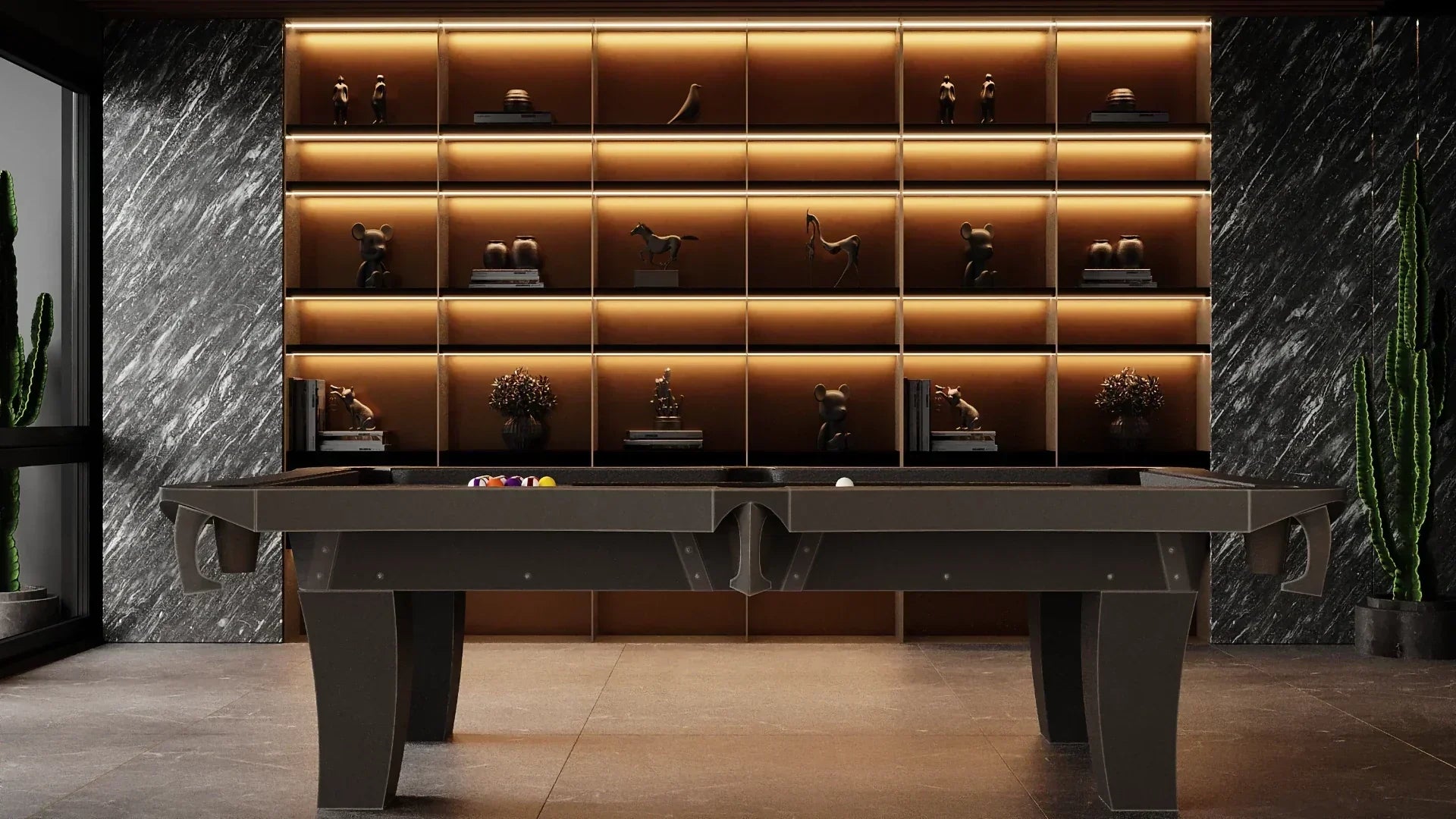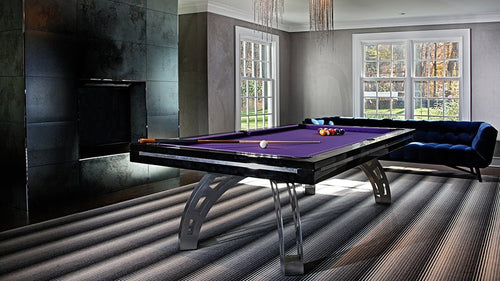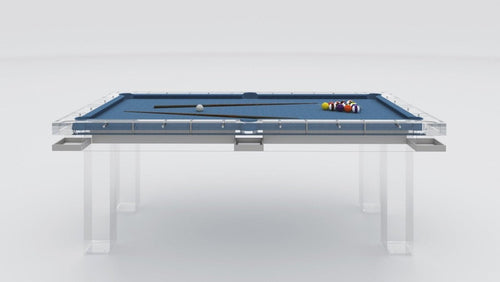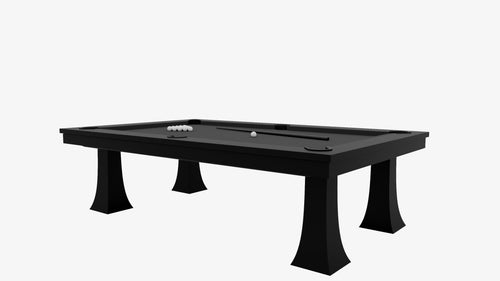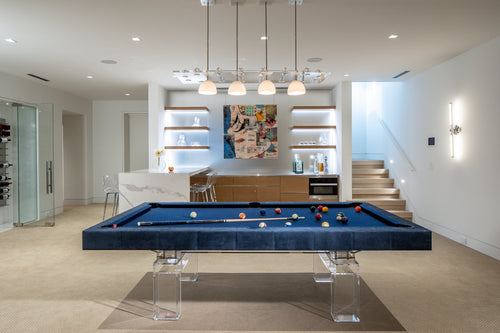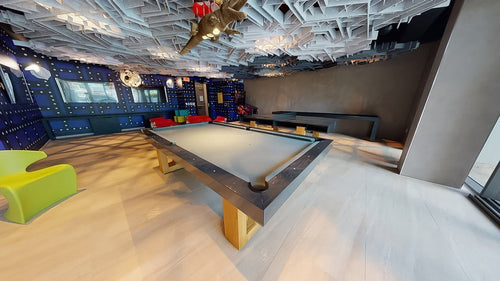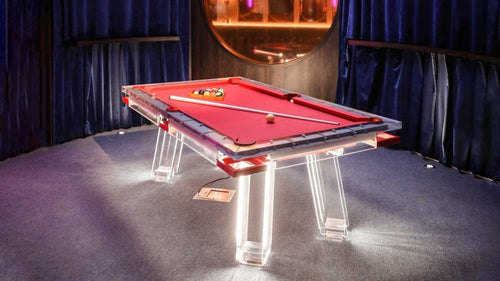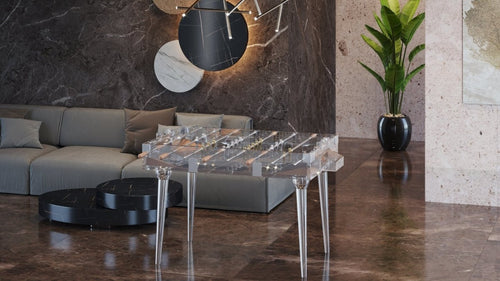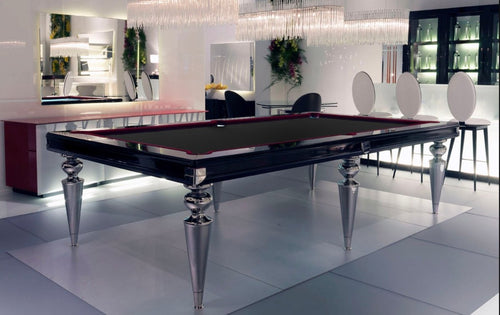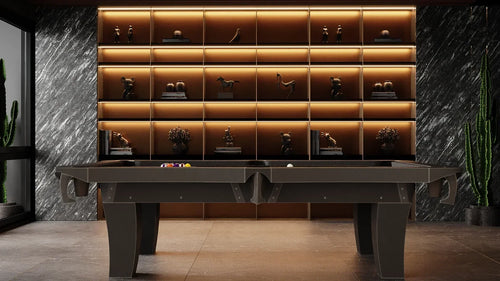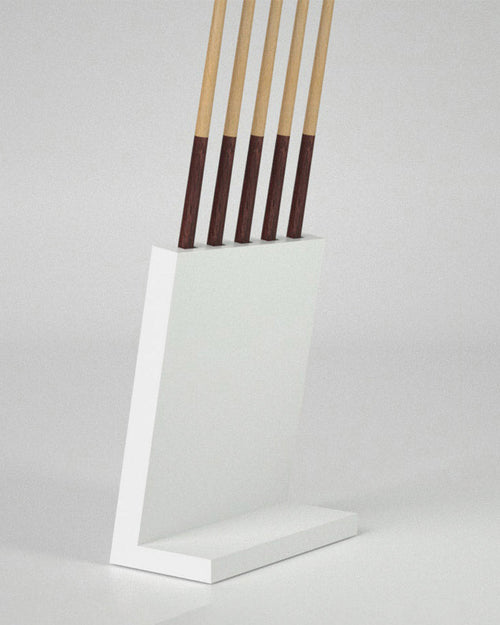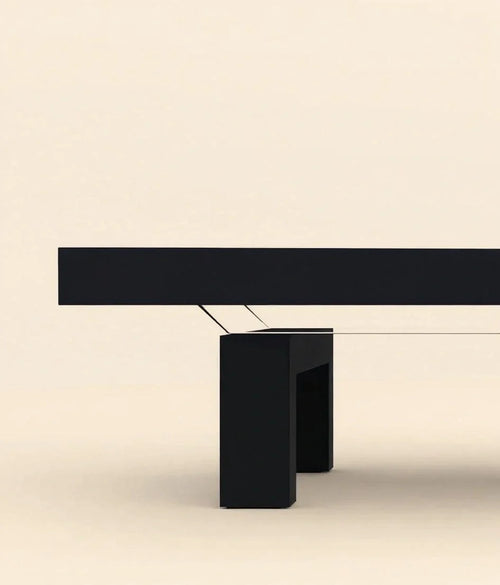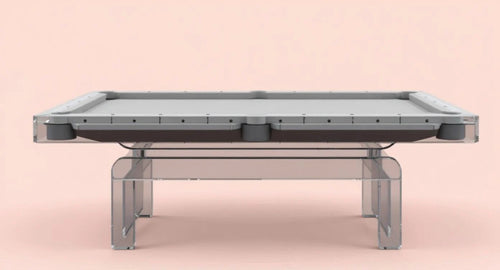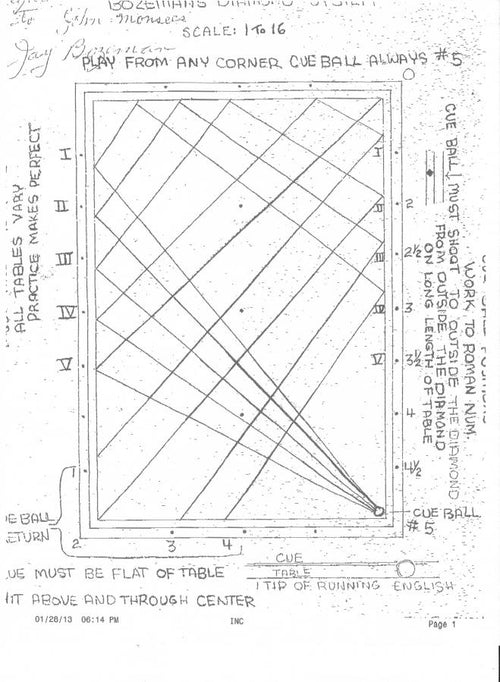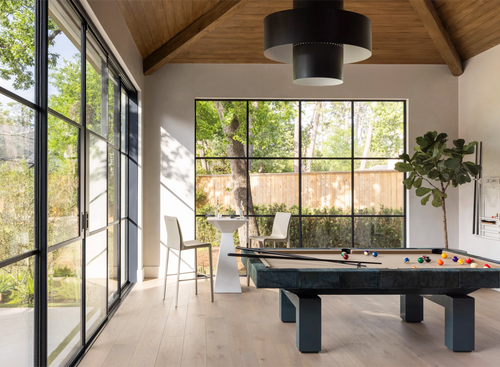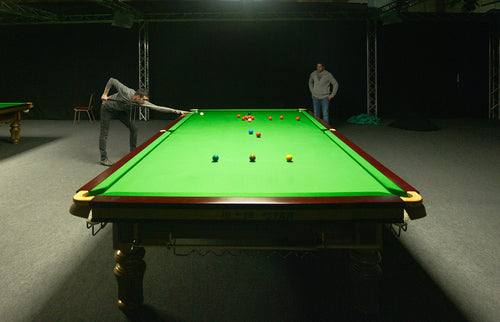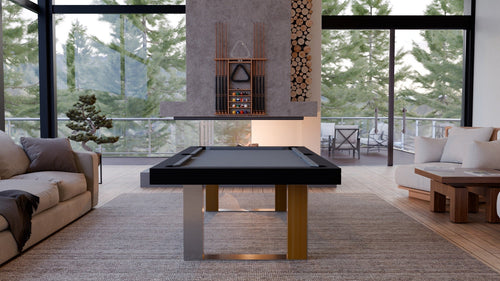Enjoy our modern designs
Estimated Read Time: 6 mins | Updated:
Ever notice how some tables feel “easy” while others seem brutally unforgiving? That difference isn’t just in your head — it’s measurable. The Table Difficulty Factor (TDF) is a system designed to rate how tough or easy a pool table plays, based on size and pocket geometry.
Table of Contents
- What is TDF?
- Why Table Size and Pocket Geometry Matter
- How to Measure Your Table
- Example Calculation
- Tools to Make It Easy
- Why It Matters
- Final Thoughts
1. What is TDF?
The Table Difficulty Factor is a percentage measure of table toughness. It combines several key measurements into a single number:
- Table Size Factor (TSF): Larger tables force longer shots, which naturally makes play harder.
- Pocket Size Factor (PSF): Wider pockets are easier, narrower pockets are tougher.
- Pocket Angle Factor (PAF): Steeper pocket facings make balls rattle more often, shrinking the “real” target.
- Pocket Shelf Factor (PLF): A deeper shelf means balls have to travel farther into the pocket opening, leaving less margin for error.
Multiply these four factors together and you get your TDF:
- TDF of 1.0 → average difficulty
- Above 1.0 → tougher than average
- Below 1.0 → easier than average
2. Why Table Size and Pocket Geometry Matter
While cloth, cushions, humidity, and even the balls’ condition all affect play, the most consistent factors are table size and pocket geometry.
- Large 9-foot tables demand longer, more precise shots.
- Bar boxes are easier due to shorter distances, though oversized corners can make side pockets tricky.
- Wide pocket mouths allow more forgiveness.
- Steep angles and deep shelves cause rattles — balls that seem pocketed but bounce out.
This is why some tables with wide mouths still “play tight” if the shelf is deep or the facings are sharp.
3. How to Measure Your Table
You only need a ruler and, ideally, a protractor or angle tool. Three simple corner pocket measurements are enough:
-
Pocket Mouth Size – measure point to point across the opening.
Example: 5 inches wide. -
Shelf Depth – measure from that line back to where the slate drops off.
Example: 1.5 inches deep. - Facing Angle – use a protractor, or measure the throat size two inches inside the pocket and convert it using a chart.
Combine these with your table size (nose-to-nose across the playing field) to calculate TDF.
4. Example Calculation
For a regulation 9-foot table:
| Factor | Value | Description |
|---|---|---|
| Table Size Factor | 1.0 | Standard 9-foot |
| Pocket Size Factor | 0.91 | 5-inch pocket mouth |
| Pocket Angle Factor | 1.1 | 144° facings |
| Pocket Shelf Factor | 0.99 | 1.5-inch depth |
1.0 × 0.91 × 1.1 × 0.99 ≈ 0.99 → this table plays about average.
5. Tools to Make It Easy
Instead of crunching numbers yourself, you can:
- Use online calculators to plug in your measurements.
- Try spreadsheet tools that color-code results (green = easier, yellow = average, red = tough).
These tools give both the overall TDF and a breakdown of each contributing factor.
6. Why It Matters
Knowing your table’s TDF helps you:
- Compare your home table against tournament conditions.
- Understand why balls rattle on certain setups.
- Adjust expectations between bar boxes and regulation tables.
7. Final Thoughts
The Table Difficulty Factor gives players a clear, measurable way to describe “tight” vs. “loose” tables. With just a few quick measurements, you can determine if your setup is forgiving, average, or championship-tough.
Grab a ruler, check your pockets, and see how your table rates — it might explain a lot about how your game feels.
Upgrade Your Game
Want to compare your table’s TDF or upgrade to a precision-built model? Explore our custom billiards collection or reach out for expert advice.
Explore Pool TablesQuestions? Contact us for personalized recommendations.


